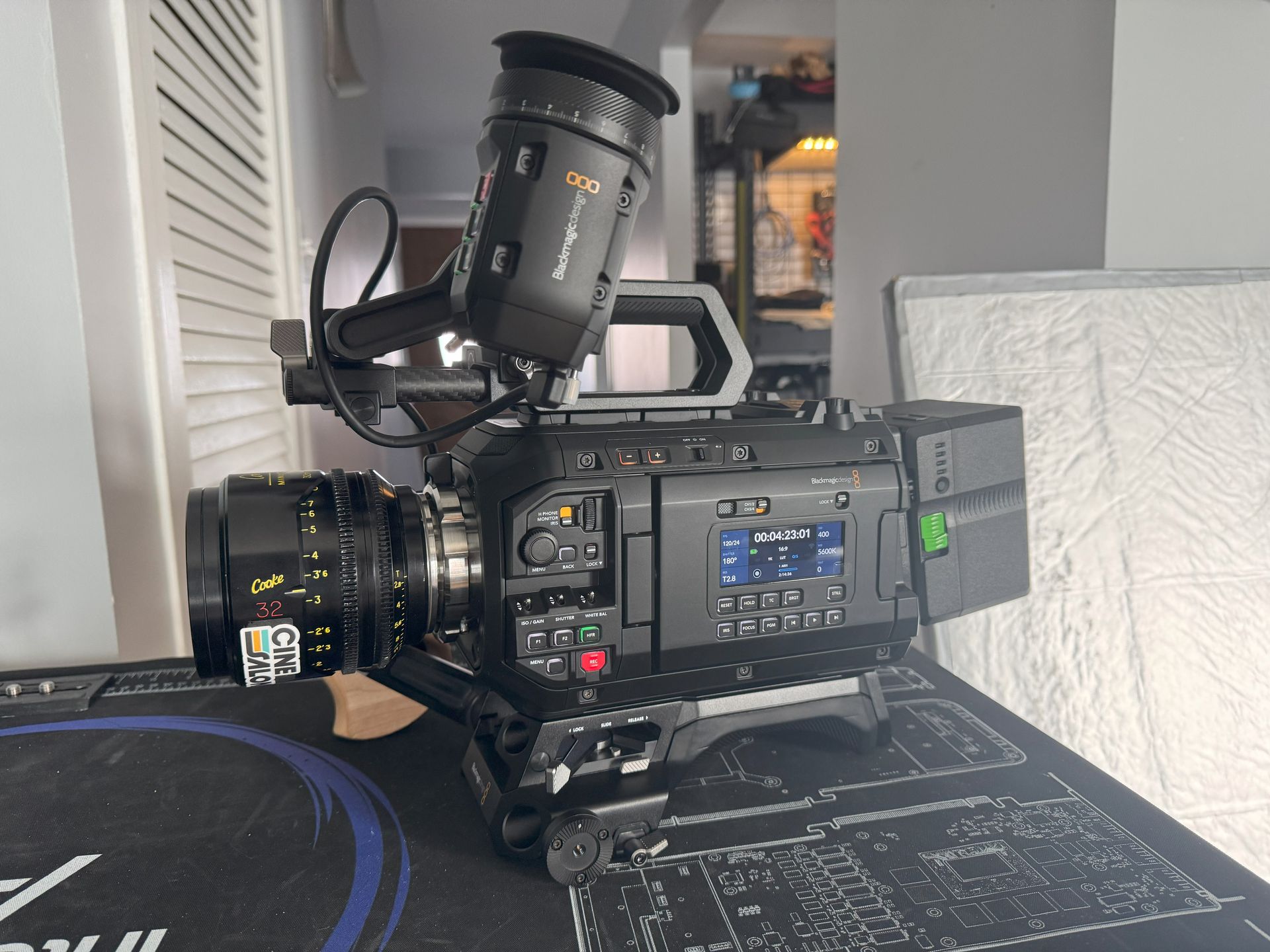
In today's digital era, as attention spans dwindle rapidly, content creators grapple with the ongoing challenge of captivating their audience. Creating compelling content is paramount in this endeavor, sparking a continuous discourse on choosing between short-form and long-form content.
What is Short-Form Content?
"Short-form content" has been making waves in the digital sphere for quite some time. It involves succinctly conveying information, essentially serving as the content world's equivalent of an elevator pitch.
Typically, short-form content is under 1,000 words. It spans various mediums, such as concise blog articles, snappy social media posts, and bite-sized videos. Its effectiveness swiftly captures the audience's attention and promptly delivers value or entertainment.
This style of content aligns seamlessly with our fast-paced lifestyles. Whether breezing through social media feeds or scanning headlines over morning coffee, short-form content is tailored to provide quick, engaging, and easily digestible information.

What is Long-Form Content?
Conversely, we find ourselves in long-form content—a space where information thrives, discussions deepen, and knowledge is carefully cultivated. It starkly contrasts its short-form counterpart, prioritizing thorough exploration and extensive coverage.
Long-form content spans over 1,000 words, manifesting in formats like ebooks, whitepapers, and lengthy blog articles. Its chief aim is to provide readers with an in-depth comprehension of a specific topic, issue, or subject matter, going beyond surface-level exploration by offering profound insights, analysis, and often practical solutions.
This type of content serves as a means to establish authority in a given subject, allowing the opportunity to navigate intricate ideas, showcase expertise, and comprehensively address readers' inquiries.

Differences
Length
Short-form content follows a stringent word limit, usually below 1,000 words. In contrast, long-form content extends beyond this threshold, frequently surpassing 1,000 words and occasionally stretching to several thousand.
The length of your content directly influences how much information you can convey. Short-form content is like a quick sprint, delivering a concise message that's perfect for capturing the fleeting attention of today's busy readers. In contrast, long-form content resembles a marathon, allowing you to delve into a subject exhaustively, leaving no questions unanswered.
Depth
Short-form content, by its very nature, tends to be less in-depth. Due to its word limit, it provides a surface-level overview of a topic, highlighting the essentials but rarely venturing into profound analysis or extensive exploration. This brevity is both a strength and a limitation of short-form content.
Long-form content, however, shines in the department of depth. It's designed to provide readers with a comprehensive understanding of a subject. It allows you to dissect complex ideas, present nuanced arguments, and offer detailed explanations. Readers who engage with long-form content expect to receive in-depth knowledge and insights.
The depth of your content determines its value to the audience. While short-form content might be perfect for quick updates or sparking curiosity, the long-form range caters to those who seek in-depth insights and are willing to invest more time in their learning process.
Purpose
Short-form and long-form content also diverge in their primary purposes. The short-form range is often crafted to educate, entertain, or persuade readers in a short amount of time. It's a vehicle for quick information dissemination, grabbing attention, and sparking interest. Short-form content is ideal in social media posts, news snippets, or attention-grabbing headlines.
Conversely, long-form content serves a multifaceted role. It functions as a trust and authority-building tool within your niche, generates leads by providing comprehensive resources, and propels sales through well-structured, information-rich content. It is a foundational element in content marketing strategies, positioning your brand as a thought leader.
The purpose of your content aligns with your broader objectives. Short-form range excels at creating awareness, whereas long-form content frequently catalyzes customer engagement, loyalty, and conversion.

Why is it important to choose the right type of content for your audience?
Aligning with Marketing Goals
The decision between short-form and long-form content is pivotal in determining your success in achieving marketing goals. Opting for long-form content, such as ebooks and whitepapers, becomes a potent strategy to generate leads. These formats enable a deep dive into subjects, showcasing expertise and capturing the attention of potential customers seeking in-depth information.
Conversely, if the primary objective is to enhance brand awareness, short-form content like social media posts and blog articles emerges as the preferred choice. These formats spark interest, share quick updates, and engage the audience with easily digestible information.
Selecting the appropriate content aligned with your marketing goals ensures that your efforts are focused and stand a better chance of success.
Tailoring to Audience Preferences
Every audience is unique, and their preferences should guide content creation decisions. A mismatch between your content type and your audience's preferences can lead to disengagement and missed opportunities.
Understanding what your audience craves –concise information on social media or in-depth analysis in a whitepaper – allows you to meet their needs and maintain their interest. Speaking your audience's language sets you apart—it's akin to establishing a meaningful connection.
Content that resonates with your audience stands a higher chance of being consumed, shared, and prompting action. It builds a stronger connection and fosters trust.
Building Credibility and Authority
Content serves as a potent instrument for solidifying your authority within your niche when your audience views you as a dependable source of information and insights, their trust in your recommendations, products, and services increases.
With its depth and thoroughness, long-form content becomes instrumental in achieving this goal. It positions you as an expert and a trusted resource for intricate topics. As your audience depends on you for in-depth knowledge, it fosters brand loyalty and cultivates long-term customer relationships.
Credibility and authority are the cornerstones of successful branding and marketing. Content that demonstrates these qualities strengthens your position in the market.
Tailoring Content to the Buyer's Journey
The buyer's journey is a crucial consideration in content marketing. The type of content they need varies depending on where your audience stands in this journey – whether they're discovering a problem, considering solutions, or ready to purchase.
Short-form content can be invaluable in the awareness and consideration stages, capturing attention and sparking interest. Long-form content becomes paramount in the decision and purchase stages, providing the necessary information and reassurance to guide your audience toward conversion.
Aligning your content with the buyer's journey ensures you're nurturing leads effectively and not overwhelming them with unnecessary information.

Benefits of short-form content
1. Easy to Consume
In a world of scarce time, the brevity of short-form content is a shining virtue. It's easy to consume because it gets straight to the point. The short-form range delivers value without demanding an extensive time investment from the reader, whether it's a snappy social media post or a concise blog article.
Short-form content's "quick and easy" nature is perfect for busy individuals constantly moving. It fits neatly into those small pockets of free time during a commute, coffee break, or scrolling through social media. By keeping it concise, you respect your audience's time and provide information or entertainment in a manner that doesn't disrupt their schedules.
2. Engaging
Visual appeal plays a vital role in the engagement factor of short-form content. With its inherent brevity, it often relies on eye-catching visuals, compelling headlines, and succinct messages to grab the audience's attention. Combining concise text and striking visuals makes short-form content more engaging and attention-grabbing.
Readers and viewers are more likely to scan through a social media post with a captivating image and a brief, impactful message. Short videos with snappy editing are more likely to keep viewers engaged till the end. The ability to capture and retain attention quickly is a hallmark of short-form content, making it ideal for those who crave immediate gratification and visual stimulation.
3. Shareable
Short-form content is designed for sharing. Its succinct nature and visual appeal make it inherently shareable across various platforms and channels. Whether it's a witty tweet, an engaging Facebook post, or a bite-sized video on Instagram, short-form content is easily digestible and perfect for sharing with friends, family, or colleagues.

When to Use Short-Form Content
Quick Education, Entertainment, or Persuasion
Short-form content is your trusty ally when you must swiftly get your point across. Short-form content is crafted for streamlined communication, be it a brief tutorial, a humorous anecdote, or a compelling call to action. It's ideal when you aim to educate, entertain, or persuade your audience without demanding a significant investment of their time.
Generating Buzz
Short-form content is your go-to choice if you're launching a new product, service, or event and want to create a buzz around it. The ability to capture attention quickly and generate excitement is where short-form content shines. Snappy social media posts, teaser videos, and succinct blog articles can stir curiosity and anticipation effectively.
Social Media Promotion
Social media is the playground of short-form content. It's the ideal platform for sharing bite-sized, engaging content that quickly captures the scrolling eyes of your audience. Whether posting updates, sharing visual content, or running a brief campaign, short-form content fits seamlessly into the fast-paced world of social media.

When to Use Long-Form Content
In-Depth Exploration
When you must delve deep into a subject, provide comprehensive information, and offer detailed analysis, long-form content is your trusty companion. It's ideal for explaining complex concepts, sharing extensive research, and guiding your audience through in-depth explorations.
Building Trust and Authority
Long-form content emerges as a potent tool for positioning yourself or your brand as an authority in your niche. It's the platform where you showcase your expertise and evolve into a go-to resource for in-depth knowledge. Readers who seek comprehensive insights and solutions often turn to long-form content, and this trust-building can lead to long-lasting customer relationships.
Nurturing Leads and Conversions
Decision-making in the buyer's journey often requires substantial information and reassurance. Long-form content is a strategic choice for nurturing leads and facilitating conversions. It provides the depth and breadth of information needed to address concerns, offer solutions, and guide potential customers toward purchasing.
Complex Topics and Explanations
Some subjects demand a more thorough approach. Long-form content is ideal for breaking down complex topics, explaining intricate processes, and presenting comprehensive arguments. It accommodates the need for details and extensive explanations, making it the right choice when dealing with complex issues.
How to choose the right content
1. Understand Your Audience
Selecting the appropriate content type requires delving into the minds and hearts of your audience. Understanding these aspects is crucial for tailoring your content strategy effectively. This is where thorough audience research is your compass.
Consider demographics, psychographics, and behaviors. A solid understanding of your audience's needs and interests guides you toward relevant and engaging content. If your audience craves brevity and instant gratification, short-form content might be the way to their hearts. If they're knowledge seekers, long-form content will be your key to their trust.
2. Align with Your Marketing Goals
Your content isn't created in isolation; it's part of a broader marketing strategy. Your marketing goals should be the guiding stars in your content creation journey.
If lead generation is the game's name, long-form content like ebooks and whitepapers can be valuable assets. They provide the depth and substance that attracts potential customers seeking in-depth information.
For sales, your content needs to nurture and convert leads. Long-form content can play a role here, too, providing the detailed insights and reassurances required to push the audience toward a purchase.
If brand awareness is your priority, short-form content on social media and blog articles can quickly capture attention and introduce your brand to a broader audience.
3. Match the Content to the Topic
Certain topics have a natural affinity for specific content types. Think of it as matching the right tool to the task. Some subjects are better suited for short-form content, while others flourish in long-form range.
Topics that are quick to explain or have a solid visual element often find a comfortable home in short-form content. For instance, concise, image-rich social media posts can effectively convey a "how-to" guide on creating simple DIY crafts.
Conversely, complex subjects that require deep analysis and comprehensive explanations are better suited for long-form content. An extensive research paper on a scientific discovery or a detailed industry report can only truly shine in the long-form range.

Tips for creating high-quality short-form and long-form content
Know Your Audience
Understanding your audience is paramount. Research their preferences, pain points, and interests. This knowledge will help you tailor your content to their needs, ensuring relevance and engagement.
Provide Value
Each piece of content should contribute value to your audience's lives. Whether providing information, entertainment, or solving problems, ensure your content serves a distinct purpose and resonates with your readers or viewers.
Be Consistent
Consistency is critical to building and retaining an audience. Regularly publishing content keeps your audience engaged and builds anticipation. Create a content calendar and stick to it.
Write Clear and Concise Headlines
Your headlines are the first impression your audience gets. A skillfully crafted headline can be the decisive factor in whether your content garners attention.
Use Strong Visuals
Visual content is powerful. Incorporate images, videos, infographics, and other visuals to break up text, enhance engagement, and make your content more appealing.
Edit Carefully
Errors can detract from the quality of your content. Proofread your work diligently to eliminate typos, grammatical mistakes, and inconsistencies. Consider seeking external editing help for more extensive pieces.

Tips for Creating High-Quality Short-Form Content
Keep it Short and to the Point.
Short-form content ought to be concise and easily digestible. Aim for word counts in the range of 250-500 words or even shorter, depending on the platform. Get to the essence of your message quickly.
Use Strong Visuals
Short-form content's inherent brevity makes visuals even more critical. Leverage images, videos, and infographics to amplify the impact of your content. Visuals can convey information swiftly and engage your audience effectively.
Make it Easy to Share
Ensure that your short-form content is shareable. Incorporate social sharing buttons on your website and blog posts. Facilitate seamless content sharing for your audience on social media and other platforms.

Tips for Creating High-Quality Long-Form Content
Choose a Passionate Topic
Creating long-form content can be time-intensive. Choose a topic that genuinely ignites your passion. Your enthusiasm will permeate your writing, rendering the process more enjoyable and yielding high-quality content.
Do Your Research
For long-form content, thorough research and informativeness are paramount. Cite your sources and offer evidence to substantiate your claims. Robust research enhances credibility and adds substantial value to your content.
Organize Your Content
Long-form content can be overwhelming if not well-organized. Employ headings, subheadings, and bullet points to break up the text, making scanning easier. A well-structured piece guarantees that readers can readily find the information they seek.
Include Images and Videos
As with short-form content, visuals are essential in long-form content. They help break up the text, add visual appeal, and provide additional context. Make sure your long-form content is not just a wall of text.
Edit Carefully
Long-form content demands meticulous editing. Ensure it's free of errors, and consider getting feedback from others. A fresh set of eyes can often catch issues you might still need to look into.
Conclusion
Short-form and long-form content hold substantial sway in content marketing. The optimal selection hinges on variables like your audience, marketing goals, and the topic's nature. Adhering to these guidelines facilitates crafting top-notch content that engages your audience and is pivotal in achieving your marketing objectives.

Get total clarity on your video marketing and paid media with our FREE comprehensive data audit.







